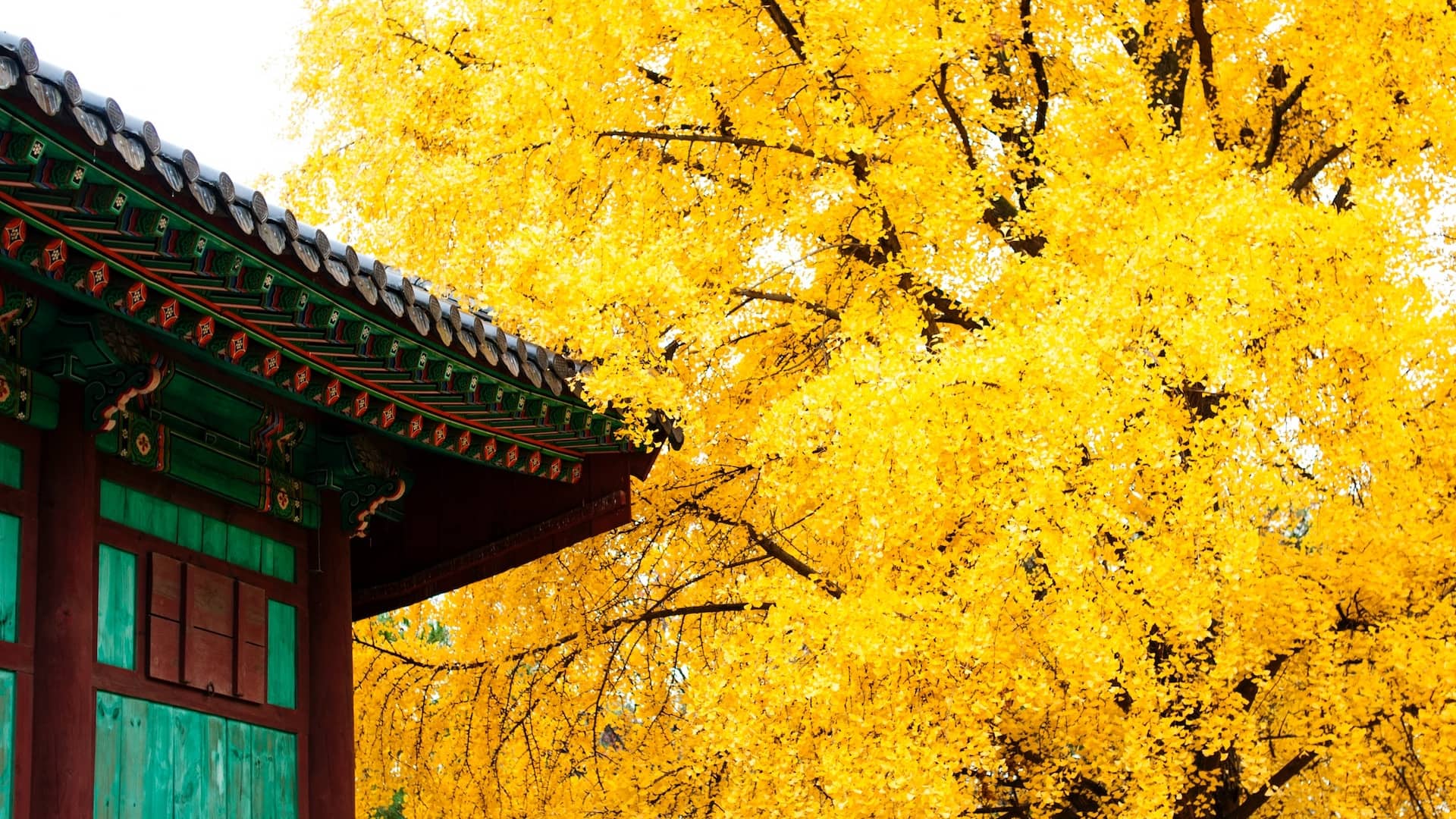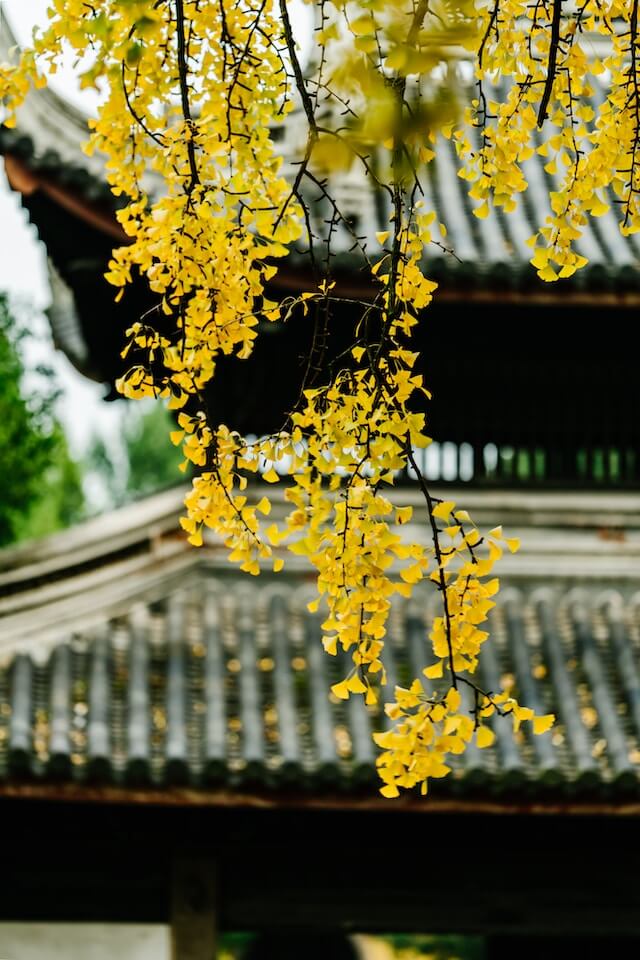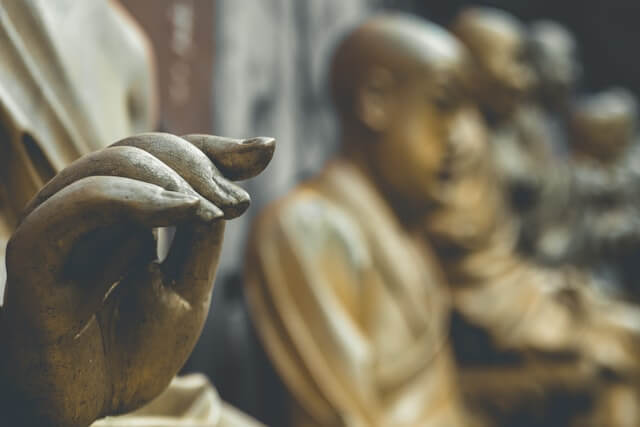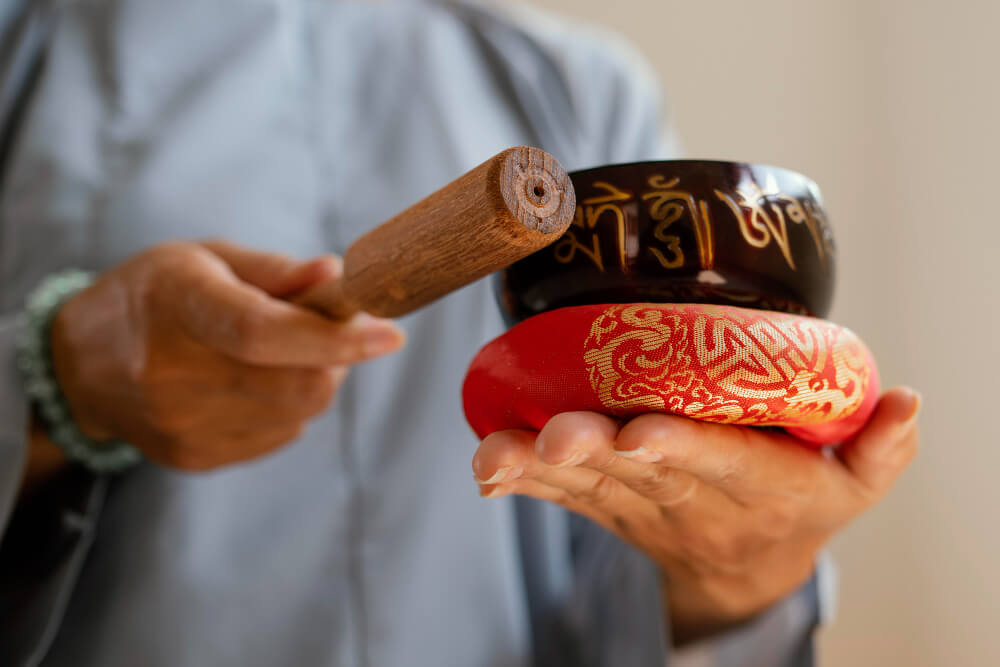Why are there often ancient ginkgoes in ancient temples?

Buddhism has a subtle relationship with flowers and trees. According to the legend, Lord Buddha was born under the tree of no worries, became a Buddha under the Bodhi tree, and died under the double holy tree, so these three trees became sacred to Buddhism in a sacred manner. It is said that the Ginkgo tree is associated with Buddhism as a stand-in for the Bodhi tree.
Of course, it is not by chance that the Ginkgo tree was chosen as the sacred tree of Buddhism. Its reputation as a "living fossil" in the plant world, its slow growth and long life span make the ginkgo tree aura of its own, full of spirituality and very compatible with the Buddhist temperament.

The sound of Sanskrit lingers, and the fragrance curls up. This living fossil of plants left behind from the glacial century uses only one color to render autumn and Zen, vibrancy and quiet beauty to the extreme!
Due to the long growth cycle of the ginkgo tree, thus creating excellent characteristics of its wood, such as straight texture, fine structure, easy processing, not easy to crack, etc., ginkgo wood has thus become a high-quality material for making wood carvings.

As a sacred tree of Buddhism, ginkgo wood is also the main material for making wooden sculptures of Buddha. Many Buddhist temples use ginkgo wood to carve the statue of Guanyin or the standing statue of Guanyin with a thousand hands. The Buddha statue carved with ginkgo wood is ethereal and lifelike, especially the thin nails of the Buddha statue are vivid as real, so the Buddhists also call ginkgo "Buddha nails".

The production of the Buddhist magic weapon wooden fish is very careful about the selection of materials, the requirements of the wooden fish made when striking must emit an ethereal sound, as if it is a distant heavenly music, will make people calm and transcendent.
Ginkgo wood is not only soft and hard, odorless, insect-resistant, but also has resonance, sound conductivity and elasticity, is a good material for making musical instruments. Therefore, most of the wooden fish used in temples are also made of ginkgo wood.

